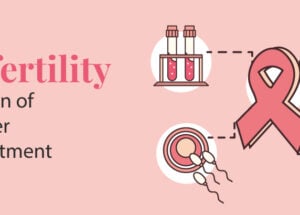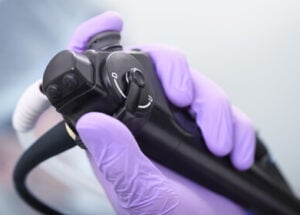Pancreas Transplant for Diabetes Mellitus: A Life-Enhancing Therapy
March 19, 2020

Diabetes mellitus is a chronic disease that arises when the pancreas does not produce sufficient insulin (type 1 diabetes) or when the body becomes resistant to the insulin it produces (type 2 diabetes). Over time, this metabolic disorder can lead to serious complications due to persistent high blood glucose levels, affecting blood vessels and nerves throughout the body. India is currently facing an alarming rise in diabetes, with an estimated 79.4 million individuals predicted to be diabetic by 2030, the highest globally. Alarmingly, Indians are developing diabetes nearly a decade earlier than their Western counterparts, with approximately 55% of diabetics being under the age of 50.
Impact of Diabetes on the Body
Poorly controlled diabetes, over a number of years, can cause progressive damage to small (microvascular) and large (macrovascular) blood vessels. This can affect vital organs such as the kidneys (leading to nephropathy and potential dialysis or transplantation), heart (causing heart attacks), brain (increasing stroke risk), eyes (causing retinopathy and vision loss), and nerves (resulting in neuropathy and poor sensation in the feet). In severe cases, diabetics may experience hypoglycemic unawareness—a condition where dangerously low blood sugar levels occur without warning, posing life-threatening risks.
Management and Limitations of Conventional Therapies
Diabetes management requires continuous medical care, lifestyle changes, and self-monitoring to minimize complications. Treatments include insulin injections, oral medications, continuous glucose monitoring, and insulin pumps that attempt to mimic the pancreas’s natural insulin release. However, these therapies have limitations such as high cost, risk of infections, device malfunctions, and lack of real-time biofeedback. As a result, optimal glucose control remains a challenge for many patients.
Pancreas Transplantation: An Advanced Solution
A pancreas transplant offers a definitive solution for select individuals with diabetes, particularly those with type 1 diabetes and some with type 2 diabetes. This surgical procedure involves implanting a healthy pancreas from a deceased (cadaveric) donor into a recipient whose pancreas has ceased functioning effectively. The primary goal is to restore natural insulin production, thereby normalizing blood glucose levels and eliminating the need for insulin therapy.
Types of Pancreas Transplants
- Combined Pancreas and Kidney Transplant (SPK): This is the most common type, accounting for over two-thirds of pancreas transplants globally. It is performed for patients with diabetes whose kidneys are failing or who are already on dialysis. Both organs are usually sourced from a deceased donor, although the kidney may occasionally come from a living donor.
- Pancreas After Kidney Transplant (PAK): This is suitable for patients who have previously undergone a kidney transplant and later require a pancreas transplant. It may also be done if the pancreas graft fails in a previous combined transplant, necessitating a re-transplant.
- Pancreas Transplant Alone (PTA): This less common procedure is reserved for diabetic patients who have severe, uncontrollable blood sugar fluctuations or hypoglycemic unawareness despite optimal insulin therapy. These patients typically have normal or near-normal kidney function.
Benefits of Pancreas Transplantation
A successful pancreas transplant can eliminate the need for insulin injections and frequent blood sugar monitoring. Patients can enjoy a regular diet, increased activity, and a more independent lifestyle. If accompanied by a kidney transplant, they are also freed from dialysis and its associated dietary and fluid restrictions. Most importantly, the transplant can reverse or halt the progression of diabetes-related complications such as kidney damage, vision loss, and neuropathy, typically observable after at least two years of successful graft function.
Candidacy and Evaluation for Transplantation
Not all diabetic patients are suitable candidates for a pancreas transplant. The procedure requires the patient to be in reasonably good health to withstand a major operation. Pre-operative investigations are essential to determine suitability, with a particular focus on identifying silent cardiovascular disease, a common condition in diabetic patients. Cardiovascular health is rigorously evaluated to minimize surgical risks.
Post-Transplant Care and Medications
After the transplant, patients must take lifelong immunosuppressive medications to prevent organ rejection. These medications lower the immune system’s response, which can increase susceptibility to infections and certain cancers. However, the benefits of transplantation in terms of survival and quality of life outweigh these risks for eligible patients.
Survival Rates and Outcomes
There are no comprehensive outcome data from India, but data from the UK offer a promising outlook. One year after a pancreas transplant, patient survival is approximately 97%, and at five years, about 90%. Pancreas graft survival is 90% at one year and 78% at five years. For type 1 diabetics who remain on dialysis without a transplant, the one-year mortality risk is nearly three times higher than that of those who receive a transplant, and this risk rises sixfold if they live beyond one year. Long-term, the 25-year survival rate is 70% for patients undergoing combined pancreas-kidney transplantation, compared to only 27% for those receiving a kidney transplant alone.
Conclusion
Pancreas transplantation has evolved remarkably since its inception in the 1960s and is now considered a life-saving and life-enhancing therapy for diabetes mellitus. For eligible patients, particularly those with type 1 diabetes and certain cases of type 2 diabetes, it offers the most effective treatment, often referred to as the ‘best medical therapy.’ While advancements in insulin delivery systems, gene therapy, and artificial pancreas technology are underway, none currently match the effectiveness of a functioning transplanted pancreas. Ultimately, a pancreas transplant offers renewed hope for a healthier, longer, and more independent life for individuals suffering from diabetes-related complications.







